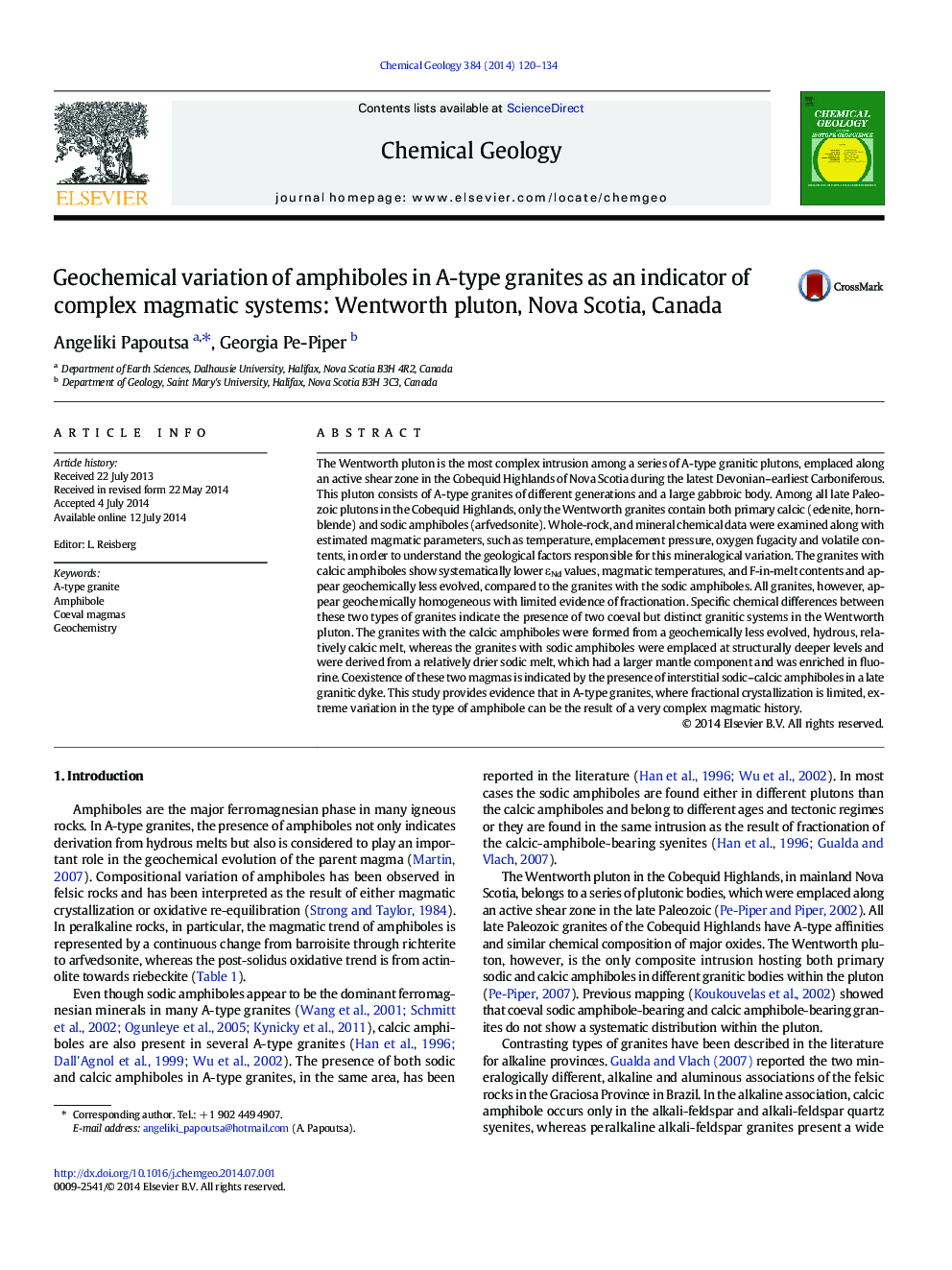| کد مقاله | کد نشریه | سال انتشار | مقاله انگلیسی | نسخه تمام متن |
|---|---|---|---|---|
| 6436638 | 1637588 | 2014 | 15 صفحه PDF | دانلود رایگان |

- Samples of the A-type Wentworth granites contain either sodic or calcic amphiboles.
- The granites were derived from two different coeval magmatic systems.
- Granites with calcic amphiboles have lower εNd and F-in-melt and are more hydrous.
- Calcic amphiboles with high Fe# formed under oxidizing conditions with coeval biotite.
The Wentworth pluton is the most complex intrusion among a series of A-type granitic plutons, emplaced along an active shear zone in the Cobequid Highlands of Nova Scotia during the latest Devonian-earliest Carboniferous. This pluton consists of A-type granites of different generations and a large gabbroic body. Among all late Paleozoic plutons in the Cobequid Highlands, only the Wentworth granites contain both primary calcic (edenite, hornblende) and sodic amphiboles (arfvedsonite). Whole-rock, and mineral chemical data were examined along with estimated magmatic parameters, such as temperature, emplacement pressure, oxygen fugacity and volatile contents, in order to understand the geological factors responsible for this mineralogical variation. The granites with calcic amphiboles show systematically lower εNd values, magmatic temperatures, and F-in-melt contents and appear geochemically less evolved, compared to the granites with the sodic amphiboles. All granites, however, appear geochemically homogeneous with limited evidence of fractionation. Specific chemical differences between these two types of granites indicate the presence of two coeval but distinct granitic systems in the Wentworth pluton. The granites with the calcic amphiboles were formed from a geochemically less evolved, hydrous, relatively calcic melt, whereas the granites with sodic amphiboles were emplaced at structurally deeper levels and were derived from a relatively drier sodic melt, which had a larger mantle component and was enriched in fluorine. Coexistence of these two magmas is indicated by the presence of interstitial sodic-calcic amphiboles in a late granitic dyke. This study provides evidence that in A-type granites, where fractional crystallization is limited, extreme variation in the type of amphibole can be the result of a very complex magmatic history.
Journal: Chemical Geology - Volume 384, 25 September 2014, Pages 120-134